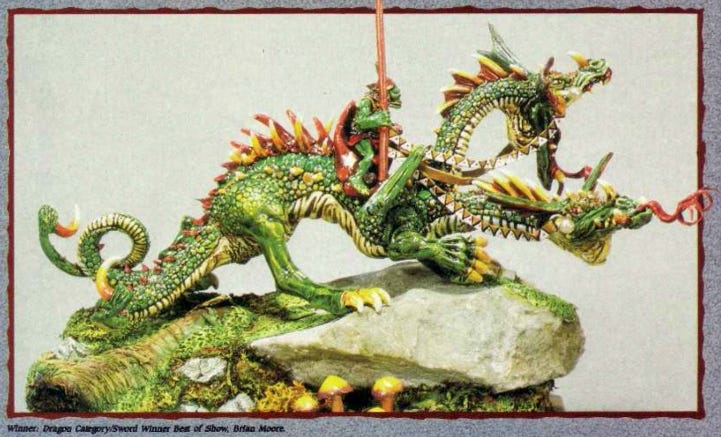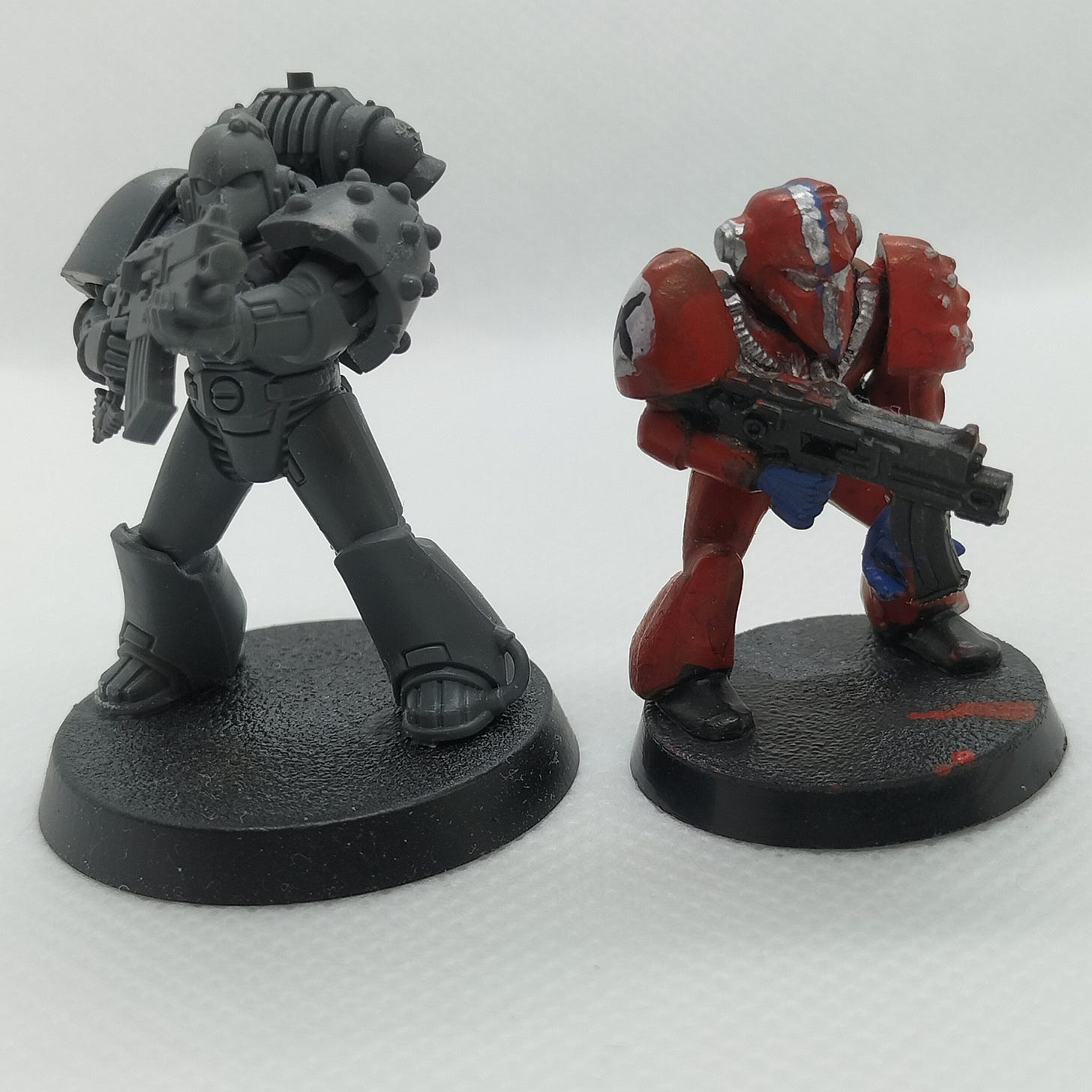On Hobby, Art and Painting - Old and New-Hammer
Some thoughts on the art, craft and painting of miniatures over time.
It's been commented on how far minature painting has come over the years; improvements in paints, brushes, techniques, technology, the miniatures themselves (higher detailed plastics etc) and - very key - the internet allowing the rapid transmission of hobby info between us fans. For example, for me personally the discovery of the ‘Slapchop technique’ was a revelation, and that’s mostly what I use now, thatg is until some clever creator invents a new thing.
How do we know that is ‘good’ though? For Warhammer, the Golden Demon painting competition is the pinnacle of recognition for hobby skill. So it is interesting to contrast the first and most recent entries. Below is the winner from the 1st ever competition from back in 1987 (the year Warhammer 40,000 Rogue Trader released!)
(Image - from White Dwarf 93, p.48 from Sept 1987 showing the winning entry by Brian Moore. There is more here)
Jump forwards 37 years and this, frankly astounding, work is the winner:
(Image - Detail from Alexandre Dos Santos’s winning entry from 2024, from here & more info here, also watch this)
I’m not throwing shade at the 1987 entry, it is great to look at and still way better than what I do. (I enjoy looking at Oldhammer art as much as new Warhammer stuff; it’s all good to me!) However it does show a snapshot of a time and what the knowledge and tools at that time could produce. The 2024 entry, IMHO, takes us to a point of transcending this as just ‘craft’ towards the creation of ‘art’ (which is a whole other topic I intend to cover in the book, also one covered here)
For me, a working definition of the difference between art and craft is that while both share creative and technical skills to produce, art aims to transcend the object created with layers of interpretation and meaning from both the creator and audience. If we take a chair as an example - most chairs now are mass produced and require little craft. However a skilled craftsperson can make a chair and use both creativity and skill to make it, and the final result may be both beautiful but is probably not art. Its just an amazing looking chair. However the use of a mass produced chair in the context of the piece ‘One and Three Chairs’ by Joseph Kosuth from 1965, shows how the same object can cross into art, as it layers meaning onto the objects for the audience to digest.
With that all said, Alexandre Dos Santos’s work is, for me, a work of art. The choices of the craft have layered meaning onto the piece that we, as the audience, can begin to interpret beyond just enjoying the display of skill. Which is an amazing trajectory that the hobby has been on since its inception.
(Also note I am differentiating here the role of the hobbyists, which is what I’m discussing, from that of the creators of the miniatures & lore etc itself, which clearly involve art and craft.)
As an aside, and looking at eBay as part of my research, you also find painted miniatures there, which I love to see as they tell a story. So this one:
(Image - 1992 Goblin miniature from here)
This lad is done in some classic 90s colours - bold, bright colours, green slotta-base and that red. Always fun to see. Then there’s this one, that someone has had fun with adding the German WW1 Knights Cross style insignia to the wings of the goblins mounted on beasts (I think vultures?)
(Image - 25mm fantasy / goblin - 2 flyers on beast, source here)
I myself purchased some old RTB01 Space Marines, which had a fun old-school paint job, though I plan to remove it and re-paint them.
(Image - an RTB-01 Space Marine next to a current Horus Heresy: Age of Darkness one. Author's own photo.)
Thanks for reading!
Note! There is more about this project here. You can comment here or find me on BlueSky.
Also note! This book project is a personal one and not affiliated with any company that, in my day job, I work with or partner with.










Don't forget that there have also been a lot of improvements in photography and publishing compared to 1987. Pictures from old WDs are probably a shadow of what that miniature actually looked like. Mike McVey talked about how he changed his painting style to incorporate the now dominant tricks like 'edge highlighting' because in an era when they were literally cutting out and taping Polaroids to paper documents to prepare them for publishing, you simply could not see a lot of the subtle effects he was doing previously.
It’s been remarkable coming back to the hobby after I drifted away in the early 90s. (I’ve been sucked back in by my daughter.) The innovation in paints and techniques and the growth in ambition are really quite something.